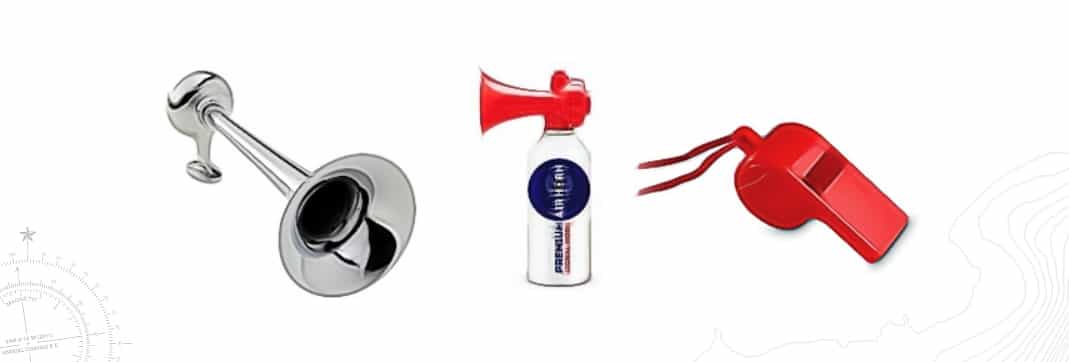Sound Signalling Devices and Appliances
Sound travels well over water. Thus, sound signaling devices are an excellent means of:
- Communicating your maneuvering intention;
- Alerting others of your presence in restricted visibility; and
- Drawing attention to emergencies.
Sound signals are sent by emitting a continuous or intermittent sound with a horn, whistle or explosive signal.

Difference between Sound Signalling Appliance and Device
- Sound-Signalling Appliance – Is permanently fitted on the vessel (i.e. horn, gong or bell).
- Sound Signalling Device – Is simply carried on board – this can be a gas horn or a pealess whistle.
Vessels must have an efficient means of producing sound signals based on the vessel’s length:
- Vessels less than 12m (39.4 feet) in length not already fitted with a sound signalling appliance must carry a sound signalling device such as a pealess whistle or a horn (electric or compressed gas);
- Vessels 12m (39.4 feet) or more in length must carry a sound signalling appliance (whistle) on board;
- Vessels 20m (65.6 feet) or more in length must have a fitted bell in addition to a whistle.
REMEMBER: A sound signalling device or appliance is required on all pleasure craft.
Study Guide
Menu

